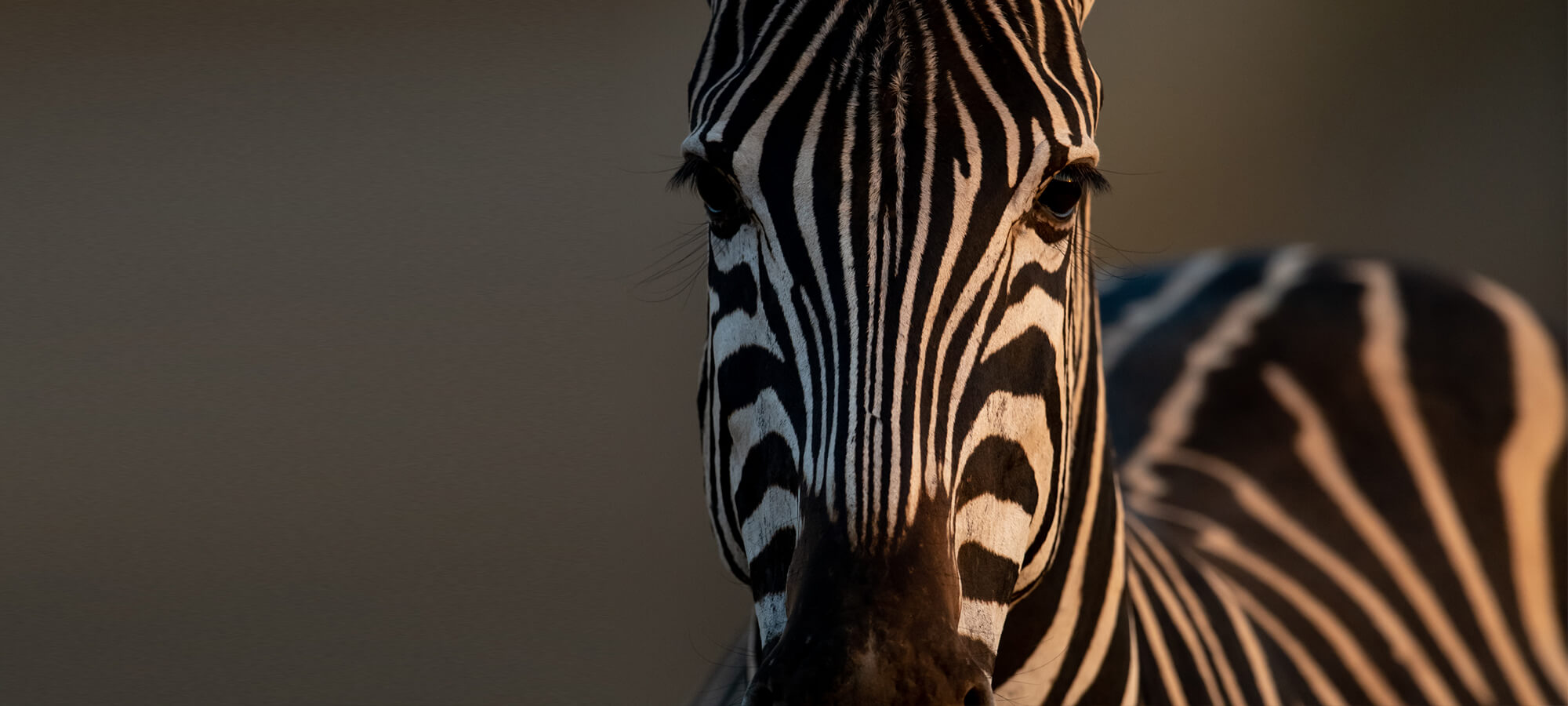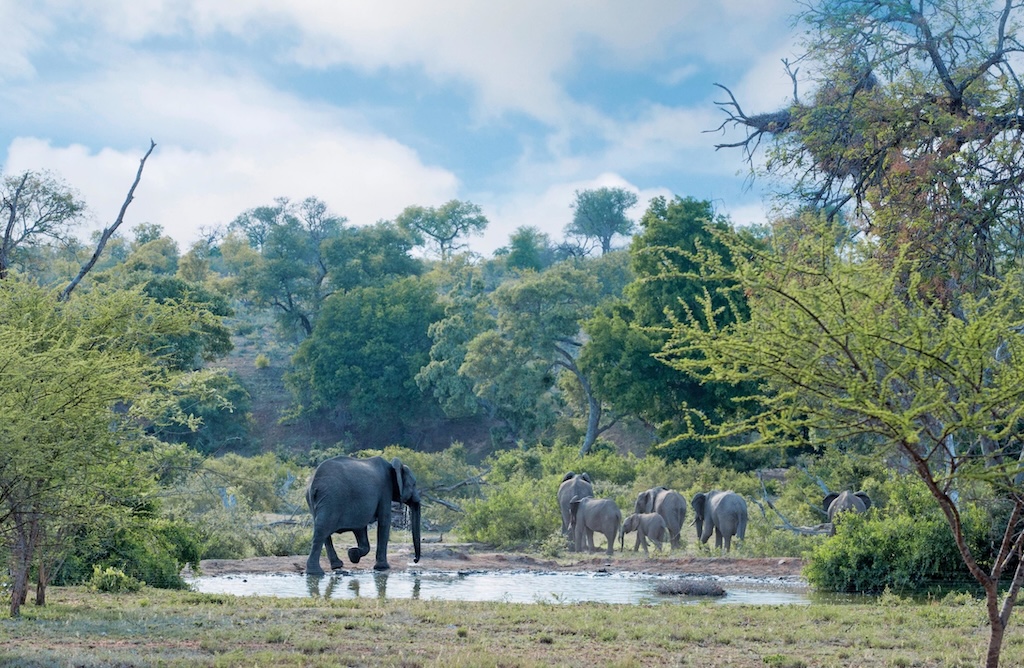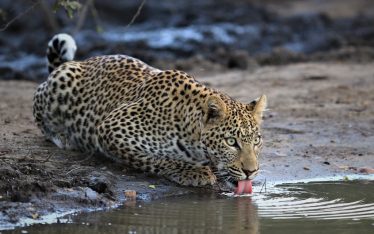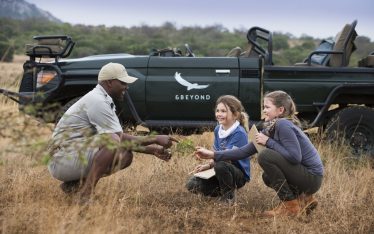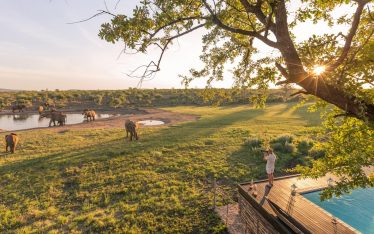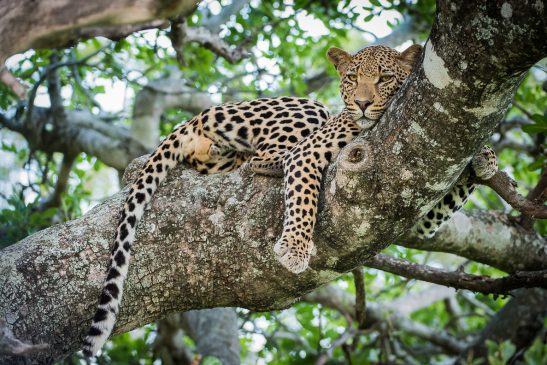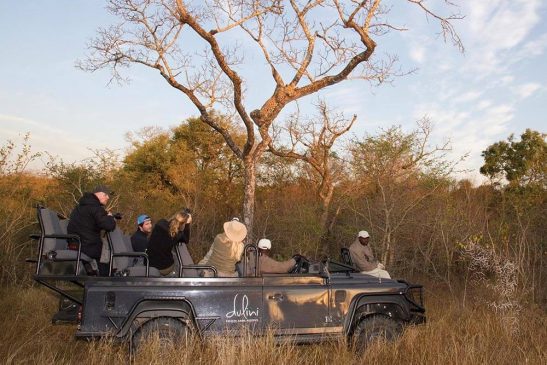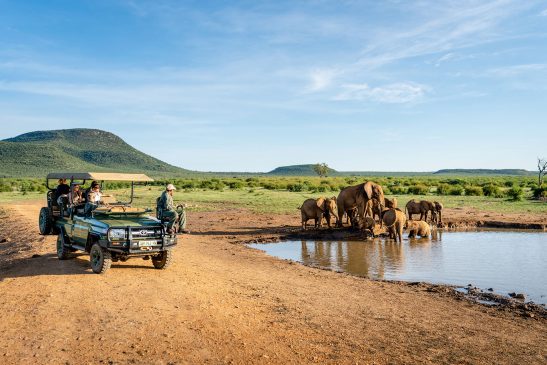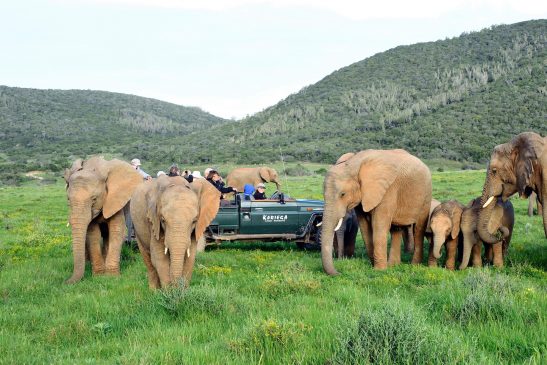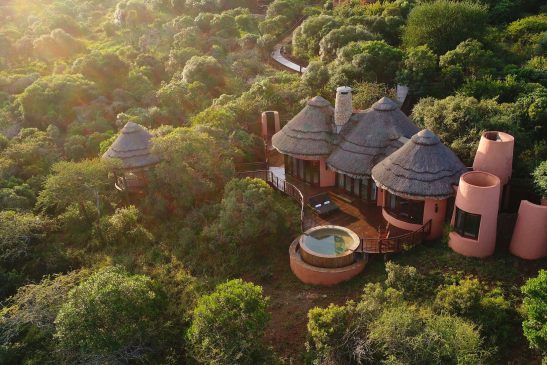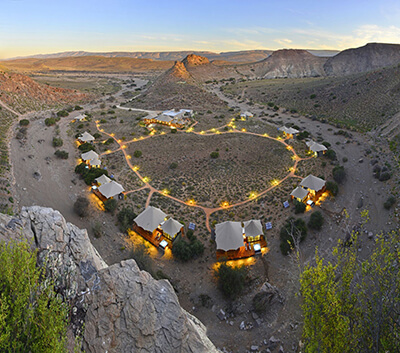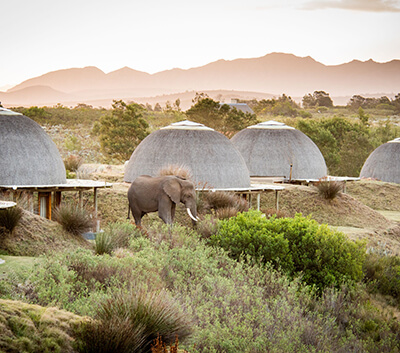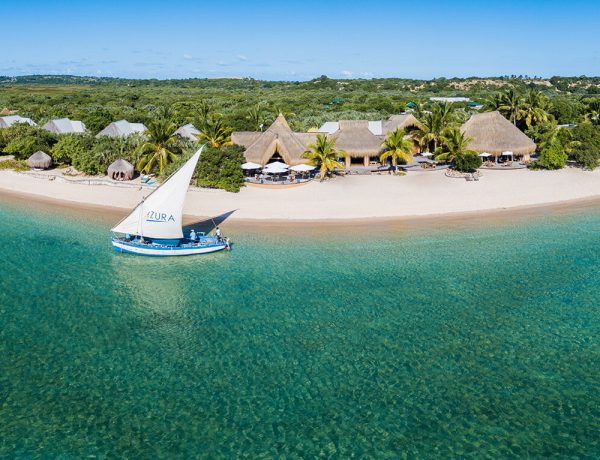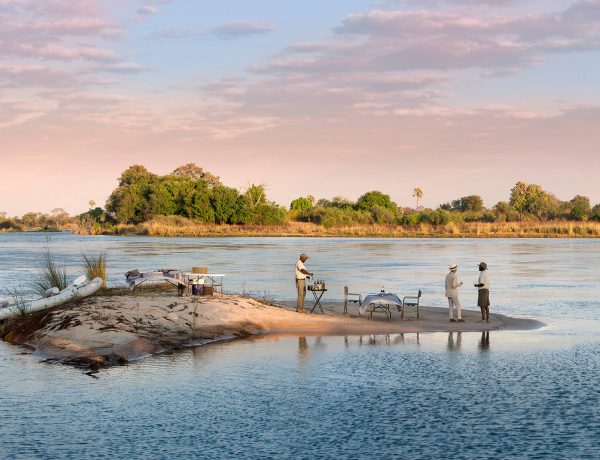The Kruger National Park is widely regarded as one of the world’s top safari destinations. However, planning your first trip can feel overwhelming if you’re unfamiliar with the layout of the park and the variety of experiences it offers. From self-drive adventures in public areas to ultra-luxurious stays in private reserves, Kruger caters to both first-time safari-goers and seasoned wildlife enthusiasts.
Kruger National Park stretches across more than 19,000 square kilometres in north-eastern South Africa.
Stretching across nearly 2 million hectares in South Africa’s Limpopo and Mpumalanga provinces, Kruger is home to an extraordinary diversity of wildlife, including the Big Five, and boasts the highest density of these animals in the country. Guests can expect to see everything from lions and leopards to giraffes, wild dogs, zebras, and over 500 bird species.
Safari options range from budget-friendly campsites to award-winning lodges, each offering a unique way to explore the wilderness. Private reserves that border the park provide exclusive activities like night drives, walking safaris, and off-road game viewing with expert guides. No matter your travel style, understanding the different areas of the park and what they offer is key to crafting the perfect safari.
Kruger National Park Size and Location
Kruger National Park is located in the north-eastern part of South Africa, covering areas within the Limpopo and Mpumalanga provinces. It is one of the largest protected wildlife areas in Africa, spanning approximately 19,485 square kilometres (7,523 square miles). To put this into perspective, the park is roughly the size of the country of Israel or about half the size of Belgium.
The park stretches about 360 kilometres (220 miles) from north to south. Its average width is around 65 kilometres (40 miles), although at its widest point it expands to nearly 90 kilometres (56 miles) from east to west. This large size creates a variety of habitats and ecosystems, which support a rich diversity of plant and animal species.
Geographically, Kruger is bounded by natural features. The Limpopo River forms its northern border, separating South Africa from Zimbabwe and Mozambique. To the south, the Crocodile River marks the boundary with the Mpumalanga province. On the eastern side, the Lebombo mountain range creates a natural barrier between the park and Mozambique.
The park’s terrain varies in altitude, ranging from about 200 meters (660 feet) above sea level in the eastern lowlands, to around 840 meters (2,760 feet) in the southwest near Berg-en-Dal. The highest point within the park is Khandzalive Hill, which offers a vantage point over the surrounding landscape.
Kruger’s vast size and location across different climate zones contribute to its incredible biodiversity, making it a key conservation area and a premier destination for wildlife viewing.
Game Drives in the Kruger National Park
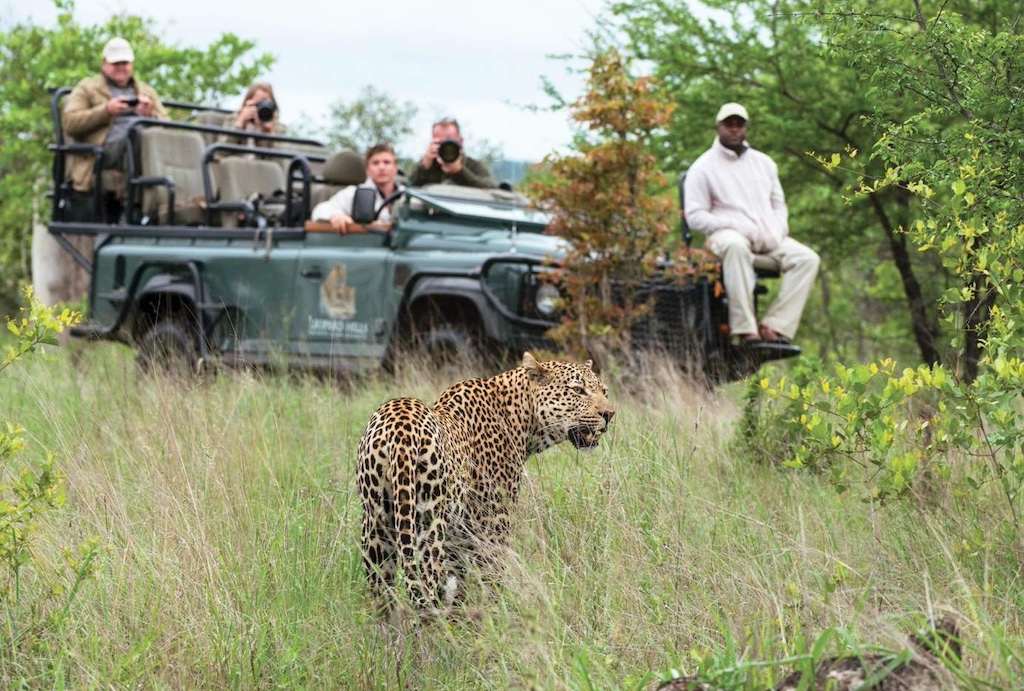
Game drives are the highlight of any trip to Kruger National Park. Typically scheduled for early mornings and late afternoons when wildlife is most active, and offer excellent opportunities to spot a wide range of animals, including the iconic Big Five. Each game drive lasts about 3 to 4 hours, and no two game drives are ever the same. Whether it’s a leopard stalking its prey, wild dogs on the hunt, or giraffes engaging in a rare courtship ritual, the unpredictability is part of the magic.
Safari vehicles are specially designed 4x4s built to handle rugged terrain while keeping passengers comfortable. With open roofs and elevated seating, they provide 360-degree views, perfect for wildlife spotting and enjoying the fresh African air.
Vehicles usually seat 4 to 10 guests and are grouped by age or shared interests to ensure a more enjoyable experience. For those seeking added privacy, private vehicle options are available at an additional cost.
Tip: During the rainy summer months, safari vehicles may be equipped with pop-up roofs to provide added protection from the elements while still allowing great visibility.
Activities in the Kruger National Park
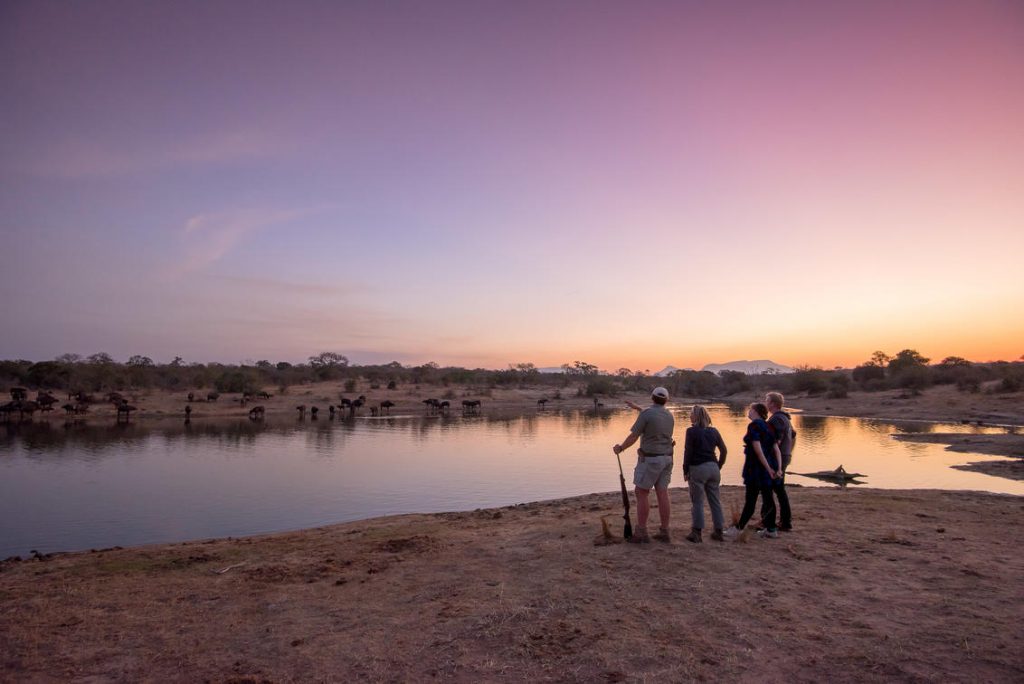
A visit to Kruger National Park promises not just exceptional wildlife encounters but a wide array of enriching and adventurous experiences. As one of Africa’s premier safari destinations, Kruger caters to a diverse range of interests, ages, and activity levels. Whether you’re a first-time visitor or a seasoned safari-goer, there is something for everyone, from thrilling game drives and cultural tours to tranquil wellness retreats and family-friendly programs. The activities available may vary by lodge or region, and due to the park’s vast size, some experiences may be located far apart. However, with thoughtful planning, you can choose accommodation close to the attractions that interest you most.
- Game Drives: Explore the park in open 4×4 vehicles during prime wildlife viewing times (morning and evening), guided by expert trackers.
- Birdwatching: Spot over 500 bird species across varied ecosystems including forests, savannahs, and riverine areas.
- Night Drives: Experience the park after dark with powerful spotlights to see nocturnal animals like lions, leopards, and hyenas.
- Treehouse Sleepouts: Spend a night elevated in the bush, listening to the wild sounds of nature in a safe, open-air structure.
- Boma Dinners: Enjoy traditional African meals under the stars in an open-air enclosure around a fire.
- Relaxation & Wellness: Spas and wellness retreats offer yoga, meditation, and massages amidst the bush.
- Blyde River Canyon: Take a day trip to see one of the world’s largest canyons with spectacular views and natural landmarks.
- Helicopter Tours: Get a bird’s-eye view of Kruger’s landscapes and wildlife.
- Hot Air Balloon Rides: Glide over the savannah at sunrise for a serene aerial safari experience.
- Bush Breakfasts: Dine in the wild with a freshly prepared breakfast after an early morning game drive.
- Shangana Village Tour: Discover the culture and traditions of the Shangaan people through guided visits and interactive experiences.
- Children’s Activities: Includes family game drives, educational programs, the Mini Rangers course, and creative activities like arts and crafts.
Wildlife in the Kruger National Park
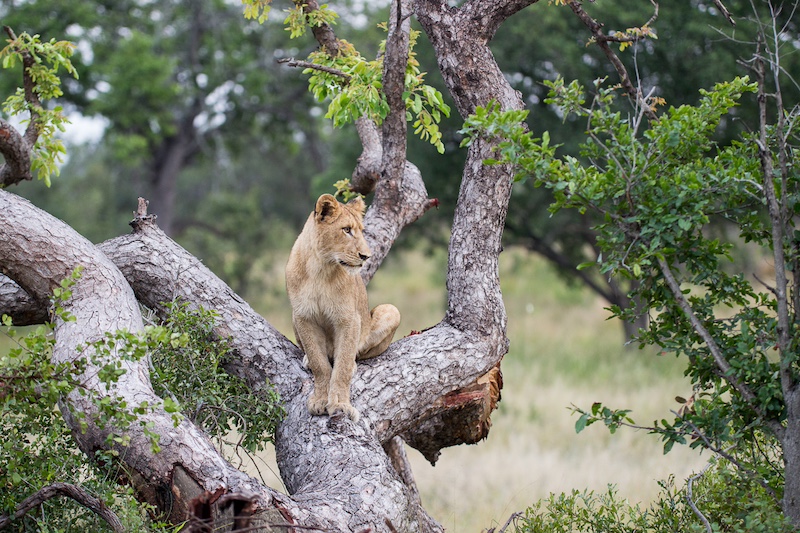
Kruger National Park is one of Africa’s greatest wildlife sanctuaries, offering an unparalleled diversity of mammals, birds, reptiles, and aquatic species. Spanning nearly 20,000 square kilometres of protected wilderness, Kruger is home to 147 mammal species, including the world-famous Big Five; elephant, lion, leopard, buffalo, and both black and white rhino. Visitors may also spot elusive species such as cheetah, African wild dog, and hyena, making every game drive a thrilling experience.
The park’s vast and varied habitats ranging from open savannas and dense bushveld to riverine forests, support an intricate web of wildlife. Predators like wild cats, jackals, and hyenas coexist with a rich array of herbivores such as giraffe, zebra, kudu, impala, sable, and eland. Nocturnal species including porcupines, bush babies, scrub hares, and genets and of course the big cats add another layer to Kruger’s fascinating biodiversity, while massive Nile crocodiles and hippos patrol the waterways.
Beyond the large and charismatic animals, Kruger is also a stronghold for smaller yet ecologically vital species, such as elephant shrews, pangolins, bats, hedgehogs, and a wide variety of rodents and reptiles. Each plays a unique role in maintaining the health and balance of this dynamic ecosystem. Whether you’re watching a herd of elephants cross the savanna, a lion pride lazing in the shade, or a bush baby darting through the treetops at night, Kruger offers a wildlife sightings like no other, raw, authentic, and teeming with life at every turn.
Did you know? The SANPARKS conversationists carry out surveys using various methods such as Fixed-Wing Aircraft Surveys, Helicopter Survey and River surveys to located, count and monitor the behaviour of animals in the Kruger National Park.
Best time to go to the Kruger National Park
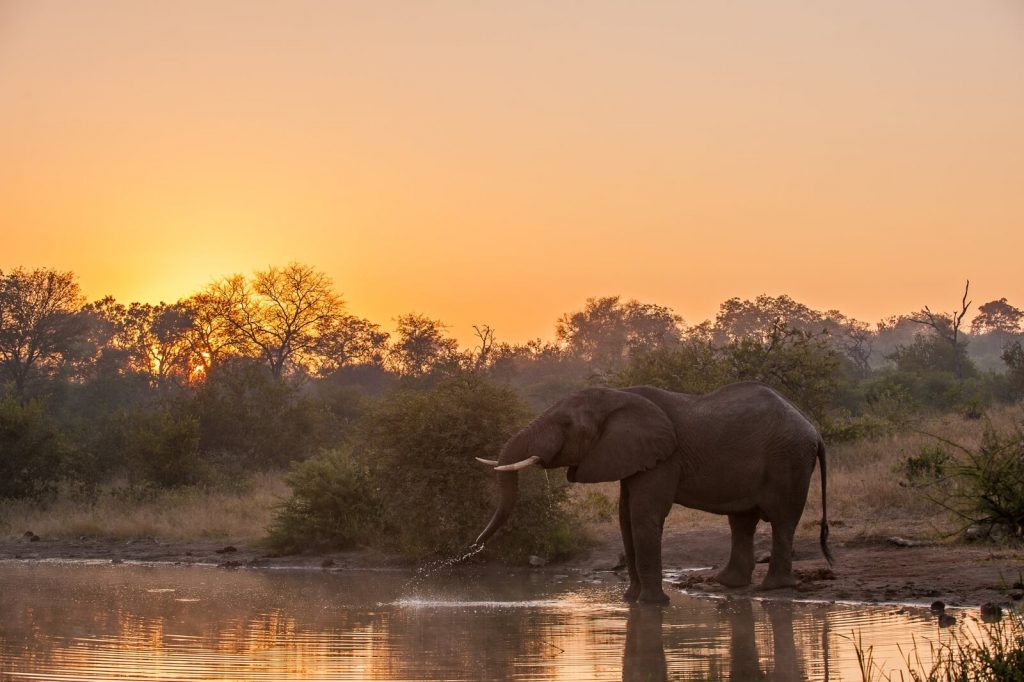
The dry winter months from May to October are considered the best time for a safari in the Kruger National Park. With sparse vegetation and animals congregating at permanent water sources, wildlife becomes easier to spot. The lack of rainfall during this period further enhances visibility and makes for excellent game viewing. While winter is a prime time to visit, Kruger is an exceptional safari destination year-round.
Understanding the Seasons in the Kruger
Each season offers unique experiences, such as lush scenery, the birthing season, and the migration of birds, making a safari in Kruger rewarding at any time of year. Personal preference is a big factor when deciding when to go, especially if you are a regular visitor.
Dry Season in Kruger National Park (May to October)
- Winter months in Kruger, typically dry and mild.
- Peak dry season: August to early October – best for game viewing.
- Cool mornings and evenings: Temperatures can drop below 10°C (50°F) – bring warm layers for early safaris.
- Warm, sunny afternoons: Temperatures rise to around 24°C–28°C (75°F–82°F).
- Little to no rain, resulting in low humidity and clear skies.
- Sparse vegetation makes it easier to spot wildlife.
- Animals gather at waterholes and rivers, increasing chances of sightings.
- Low malaria risk due to fewer mosquitoes, but precautions still advised.
- Great time for photography, with good visibility and soft lighting.
Wet Season in Kruger National Park (November to April)
- The wet season is summer in Kruger National Park.
- It runs from November to April, with the most rain and heat from December to February.
- Daytime temperatures usually reach 30°C to 35°C (86°F to 95°F), sometimes up to 40°C (104°F).
- Afternoon thunderstorms and heavy rains are common but usually short.
- The park turns green and lush after the dry winter.
- Animals spread out because water is everywhere, so spotting wildlife can be harder.
- Many animals give birth during this time, so you’ll see lots of new-borns and more predators nearby.
- Humidity is high, making midday weather feel sticky and hot.
- Mosquitoes are more active, increasing the risk of malaria, take precautions.
- Migratory birds arrive, making it the best time for birdwatching.
- The park is less crowded than in the dry season, giving a more relaxed experience.
- It’s a good time to combine a safari with a beach holiday since coastal areas are warm too.
For a more detailed month to month guide regarding the weather and conditions in the Kruger view this guide: Best to to go to the Kruger National Park
Travelling to the Kruger National Park
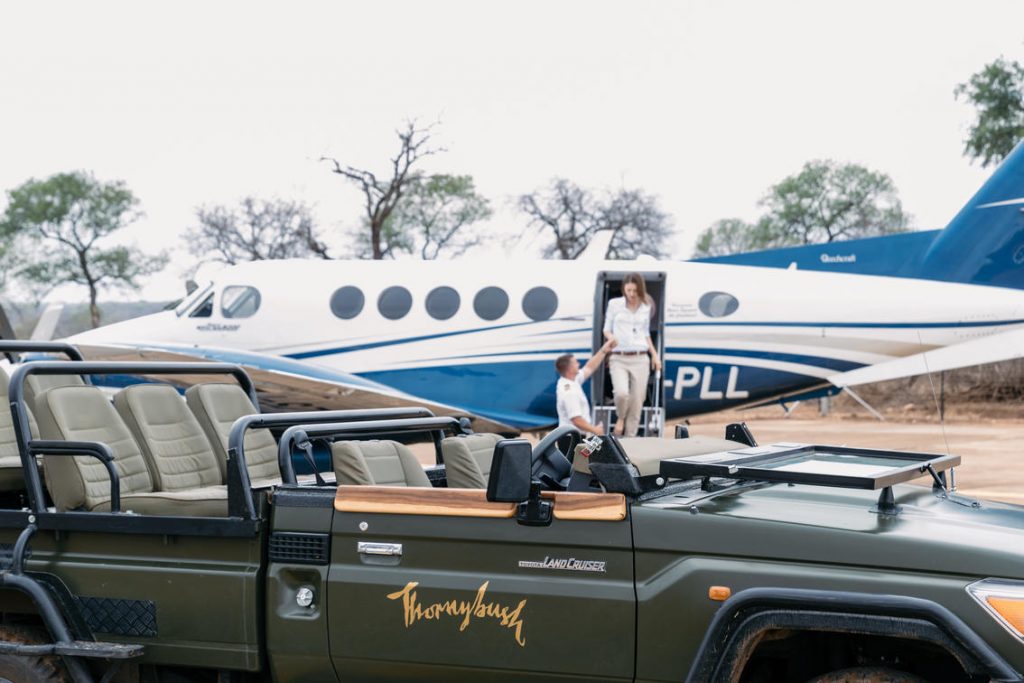
The easiest way to reach Kruger National Park is by flying into one of its three main airports: Hoedspruit (HDS), Kruger Mpumalanga International (KMI), or Skukuza (SKZ), followed by a short road transfer to your lodge. The best airport depends on which part of the park you plan to visit.
Hoedspruit (HDS) serves the central and northern regions, Kruger Mpumalanga International Airport (KMI/MQP) is ideal for the southern park, and Skukuza (SKZ) is also best for the south and Sabi Sands Game Reserve. Airlines like Airlink, CemAir, and Federal Airlines offer daily flights to these airports. For a more exclusive experience, Feral Airlines offers scheduled charted flights to many airstrips in the private reserves.
Alternatively, driving from Johannesburg takes 5 to 6 hours (400–450 km). The N4 highway is the quickest route, while the R540 & R36 offer a more scenic drive through Dullstroom. Be sure to arrive before sunset, as park gates close and night driving is not allowed.
Entrance Gates to Kruger National Park
Kruger National Park has multiple entrance gates spread around its vast area, providing access from various directions depending on which part of the park you plan to visit. Each gate connects to nearby towns and major roads, making it easier to plan your route.
Northern Gates:
- Pafuri Gate: The northernmost entrance, accessed via the R525 road from Musina.
- Punda Maria Gate: Another northern entrance on the R524 road from Thohoyandou.
- Phalaborwa Gate: Located on the R71 road from Phalaborwa.
Central Gates:
- Orpen Gate: Accessed from Klaserie via the R531 road.
- Paul Kruger Gate: Near Hazyview, located on the R536 road.
- Phabeni Gate: Also near Hazyview, off the R536 road.
- Numbi Gate: On the R569 road from Hazyview.
Southern Gates:
- Malelane Gate: Located near Malelane off the R570 from the N4 highway.
- Crocodile Bridge Gate: Near Komatipoort, at the extension of Rissik Street.
Each gate has specific opening and closing times, and visitors must enter before gates close for the day, as night driving inside the park is not permitted.
For more information on travelling to the Kruger, use our travel guide: Kruger Travel Guide
Is Kruger National Park Safe?
Kruger National Park is one of Africa’s safest safari destinations – provided visitors follow the park rules and basic safety guidelines. With well-maintained infrastructure, experienced guides, and clear regulations, the park offers the unique opportunity to observe wild animals up close in their natural habitat with minimal risk.
Animals in Kruger are used to safari vehicles, which means they typically ignore them and continue with their natural behaviour. You may witness elephants crossing the road, lions lounging in the grass, or even animals mating, often just meters away. This remarkable access is possible because vehicles are seen by wildlife as non-threatening, as long as you remain quiet and stay inside.
If you’re planning a self-drive safari, you must stay inside your vehicle at all times, except in designated safe areas like picnic spots or rest camps. Keep noise to a minimum, do not feed the animals, and avoid sudden movements. If an animal approaches or blocks your path, stay calm and still, never honk, shout, or try to drive too close.
For those joining guided safaris in open 4×4 vehicles, your experience will be led by qualified, armed guides trained in animal behavior, emergency response, and conservation. They will brief you on the rules, interpret what you’re seeing, and ensure your safety throughout the drive. This is often the best option for first-time safari-goers or those who want a more educational experience.
All camps inside Kruger National Park are fenced and secure, allowing visitors to move freely within camp boundaries. However, if you’re staying in one of the private game reserves that border the park, such as Sabi Sand, Timbavati, or Manyeleti, you may find that many luxury lodges are unfenced. In these areas, wildlife can roam freely through the camp, requiring additional caution.
At these unfenced private lodges, guests are typically escorted to and from their rooms after dark, and strict rules are in place to ensure safety. The staff are highly trained, and rangers or trackers are usually on hand to guide and protect guests. While the presence of animals such as elephants, lions, or leopards near your lodge might seem intimidating, it is part of what makes these experiences so specia, and they are managed with great care and professionalism.
To stay safe in both the national park and the surrounding private reserves, remember a few key rules:
- Always obey speed limits: 50 km/h on paved roads and 40 km/h on gravel roads.
- Stick to park gate times to avoid fines or being locked out.
- Do not litter or disturb the environment.
- Do not get out of your vehicle for photos or any other reason outside permitted areas.
- Avoid loud noises and never attempt to attract or provoke animals.
- In unfenced lodges, always follow the lodge’s safety protocols, especially when moving around after dark.
Kruger and its surrounding reserves are well-equipped for emergencies, with medical clinics in major camps like Skukuza and trained staff in constant radio communication. While cell coverage is limited in some remote areas, it is generally available near main camps and lodges.
Malaria in Kruger National Park
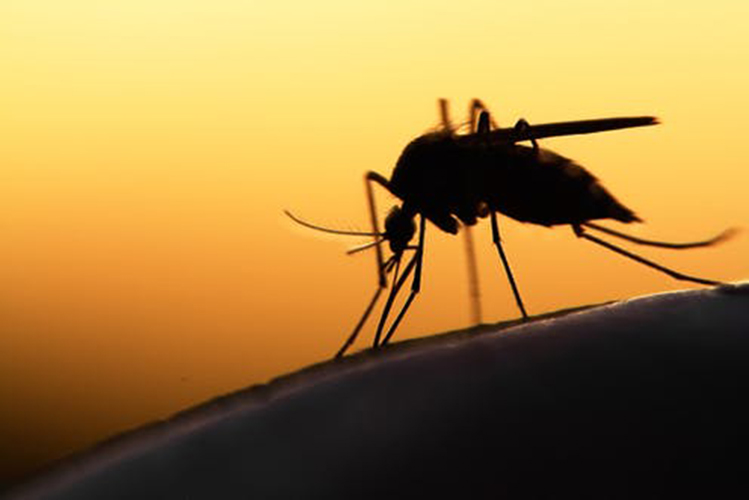
Kruger National Park is one of two South African parks located in a malaria-risk zone, with the other being Mapungubwe National Park. While the risk is generally low, especially outside the rainy season (November to April), visitors should still take precautions.
Malaria is transmitted through the bite of an infected female Anopheles mosquito, primarily between dusk and dawn. Symptoms can appear 12 to 35 days after infection and may include fever, chills, headaches, body aches, nausea, and fatigue. Severe cases can cause confusion, seizures, or dark urine.
To reduce the risk, wear protective clothing, use insect repellents (especially on ankles), stay indoors after dark, and ensure windows and doors with netted screens remain closed. All Kruger accommodations are equipped with mosquito screens.
Malaria prophylactic medication, such as Doxycycline, Atovaquone/Proguanil, or Mefloquine, can further reduce the risk but should be taken in consultation with a healthcare professional due to potential side effects. Even with medication, malaria can still occur, so any unexplained fever after visiting the area should prompt immediate medical testing.
It is always advise to seek advice from your doctor. The information on this section is taken from the SANParks website: Kruger Malaria Information
Families in the Kruger
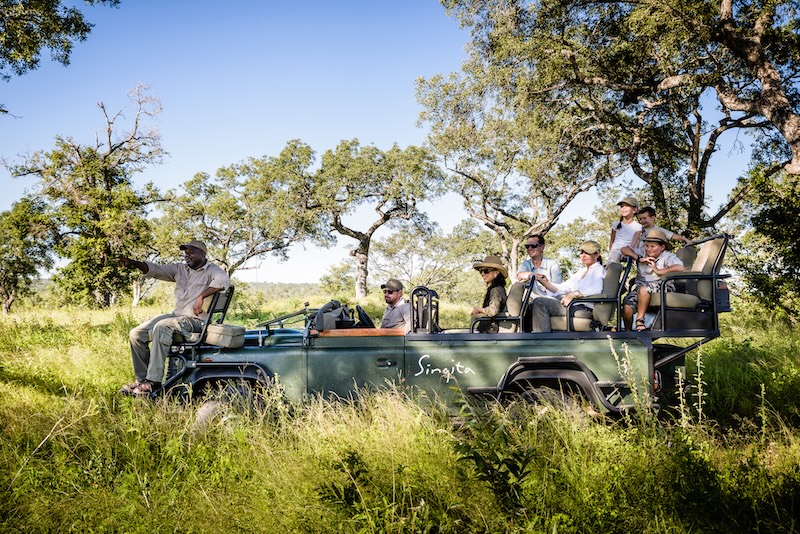
A family safari in Kruger National Park is an unforgettable adventure, offering incredible wildlife encounters and a chance to create lifelong memories in the heart of Africa.
Kruger National Park is home to several family-friendly lodges designed to accommodate children of all ages. These lodges combine warm African hospitality with modern comforts, providing a welcoming and luxurious environment. The highlight of the experience is the game drives, where families can track the iconic Big Five and explore the park’s rich wildlife.
There are plenty of activities for all ages. Families can enjoy morning and afternoon game drives together, while children can participate in specialized programs like Junior Ranger activities, learning to track animal prints, going on treasure hunts, and creating crafts. Some lodges also offer dedicated kids’ clubs with fun activities like guided nature walks and rock painting, ensuring entertainment between safari adventures.
Tip: Children aged 6 and older can usually join regular game drives, but families with younger children have the option of a private vehicle. This provides a more flexible and personalized experience, tailored to your family’s pace and interests.
Discover the best family lodges in the Kruger here: Best Family Lodges in the Kruger National Park
Kruger National Park Public Sector
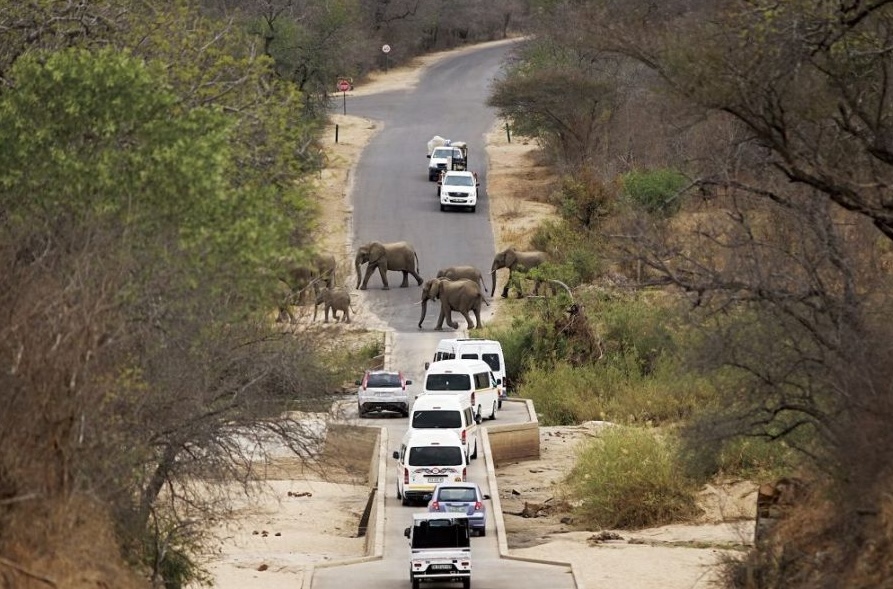
The public section of Kruger National Park is one of the largest and most iconic public-access game reserves in the world. Visitors here enjoy the freedom to explore the park in their own vehicles during gate opening hours, driving at their own pace and staying at a variety of public rest camps. Kruger offers 12 main rest camps, 5 bushveld camps, 2 bush lodges, and 4 satellite camps, catering to a range of budgets and travel styles.
While this flexibility is appealing, there are limitations. Strict park rules must be followed to protect wildlife and maintain order, vehicles must remain on designated roads, and off-road driving is not permitted. As a result, wildlife sightings may not be as intimate or frequent as those in private reserves, where off-road safaris and expert-guided experiences are available.
Established in 1898, Kruger National Park was created to protect the wildlife of the South African Lowveld and has become a global leader in conservation. It is home to an extraordinary range of biodiversity, including 336 tree species, 49 fish species, 34 amphibians, 114 reptiles, 507 bird species, and 147 mammals. The park also safeguards significant cultural heritage sites, such as ancient San rock art and archaeological landmarks like Masorini and Thulamela, offering a window into centuries of human history in the region.
Visit the SANParks website for additional information about the public sector: SANParks Website
What is the ‘Greater Kruger’?
The Greater Kruger refers to a collection of privately-owned game reserves bordering Kruger National Park. Unlike the government-managed Kruger National Park, these private reserves offer exclusive safari experiences with fewer restrictions. A key feature is the unfenced boundary, allowing wildlife to move freely between the two areas. Access to the Greater Kruger is limited to guests staying at private lodges, ensuring uncrowded game drives and personalized experiences. Visitors can enjoy unique activities not permitted in the public park, such as off-road driving, night safaris, and guided walking trails, making it one of South Africa’s premier safari destinations.
Private Reserves in the Greater Kruger
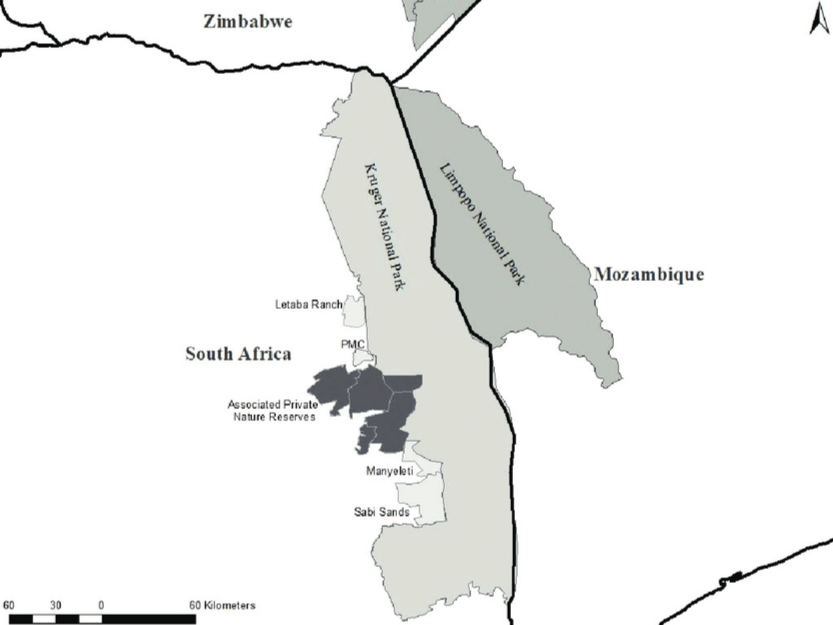
The Greater Kruger consists of more than 20 private reserves, each offering unique safari experiences. These reserves vary in size, from the sprawling 60,000-hectare Sabi Sands Game Reserve to the smaller Thornybush Game Reserve at 14,000 hectares. Most reserves share unfenced boundaries with the Kruger National Park, allowing wildlife to move freely. However, some private reserves, such as Makalali, Kapama, and Karongwe, are fenced to support specific conservation efforts like reintroduction and rehabilitation programs. Several private reserves, including Thornybush, Klaserie, Timbavati, Balule, and Umbabat, form part of the Associated Private Nature Reserves (APNR), which share fenceless borders with Kruger.
Below is a list of the main private game reserves making up the Greater Kruger National Park:
- Timbavati Private Game Reserve
- Thornybush Private Game Reserve
- Sabi Sands Private Game Reserve
- Klaserie Private Nature Reserve
- Balule Private Game Reserve
- Makalali Private Game Reserve
- Kapama Private Game Reserve
- Karongwe Private Game Reserve
Vegetation and Landscapes
The park is shaped by a variety of landscapes, influenced by climate, rivers, geology, and rainfall. It is bordered by the Limpopo River in the north, which separates it from Zimbabwe and Mozambique, and the Crocodile River in the south, forming part of the boundary with Mpumalanga. To the east, the rugged Lebombo Mountains mark the border with Mozambique.
Inside the park, many rivers flow from west to east, feeding the land and supporting wildlife. Major rivers include the Sabie, Olifants, Letaba, and Luvuvhu, each playing an important role in the ecosystems around them. Other rivers like the Timbavati, Shingwedzi, and Biyamiti, along with smaller seasonal rivers such as the Nsikazi, Nwaswitsontso, Nwaswitshaka, and Metsi Metsi, create wetlands, support floodplains, and act as vital water sources, especially in the dry season.
These river systems help shape Kruger’s rich variety of plant life. The park is divided into four main vegetation zones, generally based on how much rain each area receives, less in the north and more in the south, and the types of soils and rocks found there.
In the dry northeast, mopane trees dominate, forming dense woodlands that are well-suited to hot, low-rainfall areas. These trees are a key food source for elephants and other herbivores.
North of the Olifants River, in the park’s western half, the landscape shifts to a mix of mopane and bush-willow trees, creating a more open savanna. South of the Olifants, in the western-central section, the vegetation includes thorn trees, bush-willows, and many marula trees, whose fruit is especially loved by elephants. Dense patches of riverine forest can be found along rivers like the Sabie, especially between Skukuza and Lower Sabie.
Further south and east, near the Mozambique border, lies the knob-thorn and marula veld. This area has some of the best grazing in the park, thanks to its rich grasslands and mix of tree species such as knob-thorn, leadwood, and marula.
In addition to these main zones, Kruger also has several smaller, unique vegetation communities. Areas like Pretoriuskop and Malelane in the southwest receive more rainfall and are home to different bush and woodland plants. In the far north, the sandveld near Punda Maria contains rare plant species not found elsewhere. The hills along the Luvuvhu River are also important for their plant diversity and near-endemic species.
This wide range of habitats supports an incredible variety of life, including over 500 bird species, nearly 150 species of mammals, and countless reptiles and insects. The changing landscapes and vegetation also create a constantly shifting experience for visitors, making each region of Kruger feel distinct and full of discovery.
Where to stay in the Kruger National Park
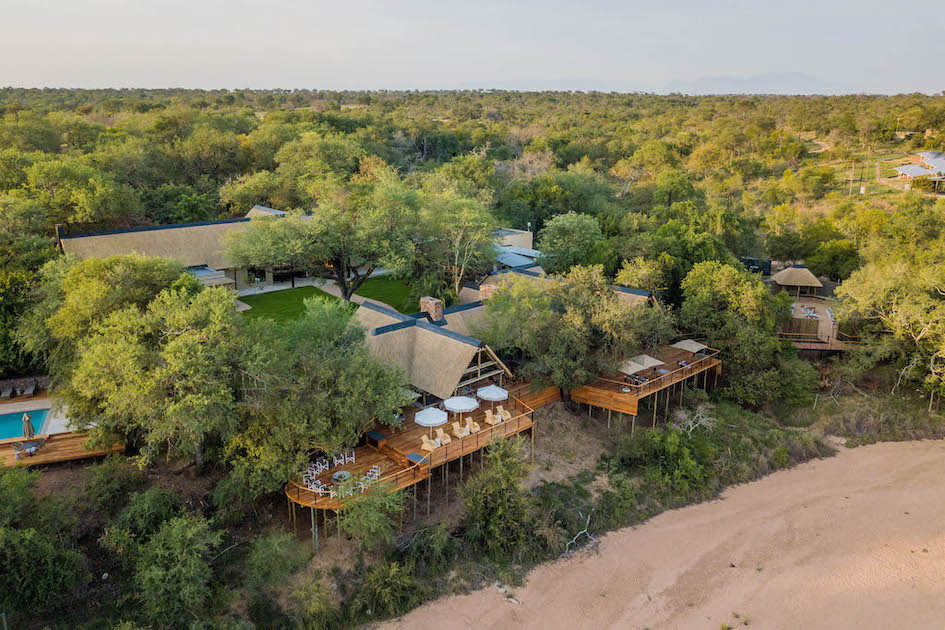
When it comes to accommodation in Kruger National Park, there is a wide array of options to suit every experiences.
- Inside the Park – SANParks Rest Camps
Staying inside Kruger National Park at one of the official SANParks rest camps is a great option for self-drive visitors. These camps provide basic but comfortable accommodation and direct access to the park’s roads and wildlife. It’s an affordable choice with various options, including huts, bungalows, and camping. - Outside the Park – Hotels, Guesthouses & Self Catering
Many visitors choose to stay in hotels or guesthouses just outside the park’s gates. This allows easy access for day trips into the park when the gates open. Towns like Hazyview, Malelane, and Phalaborwa offer a good range of lodging with the convenience of nearby restaurants and services. - Private Game Reserves – Greater Kruger Area
For a more exclusive experience, staying in one of the private game reserves that form part of the Greater Kruger is highly recommended. These lodges offer full-board packages that typically include luxury accommodation, all meals and beverages, and guided wildlife activities such as game drives and walking safaris. With fewer vehicles and more flexible rules around sightings, guests enjoy a more intimate and immersive safari experience.
Overall, the private reserves in the Greater Kruger area are considered the best option for those seeking a superior, all-inclusive safari experience with expert guides and exceptional wildlife viewing.
If you are planning a trip to the Kruger we recommend using readings these guides to find the best places to stay:
- Top Luxury Lodges in the Kruger National Park
- Best Family Safari Lodges in Kruger National Park
- Best Tented Accommodation in Kruger National Park
- View all Kruger lodges
- View all Kruger holiday packages
Ideal Length for a Kruger National Park Safari
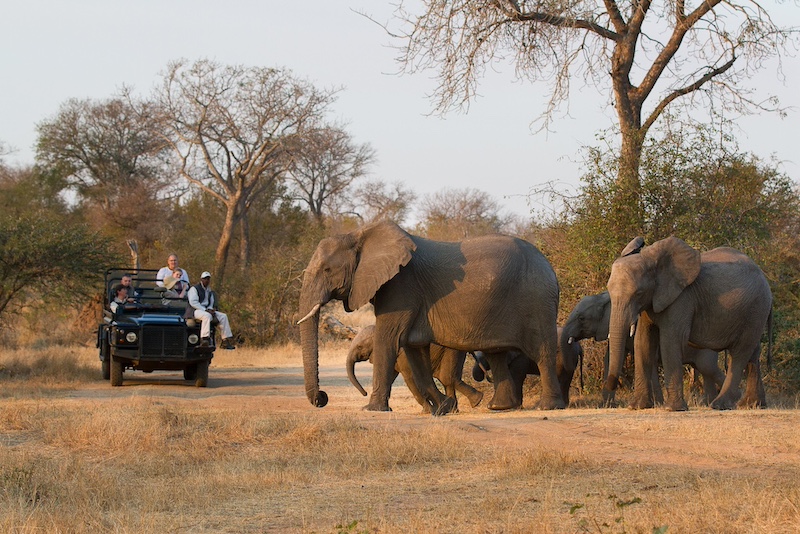
For the best safari experience, a stay of 4 to 5 nights in Kruger National Park is ideal. This allows enough time to spot the Big Five and enjoy a wide variety of wildlife sightings. If you’re short on time, 3 nights can still offer a fulfilling experience, but shorter stays may limit your chances of seeing key species.
For avid wildlife lovers or those seeking a more immersive journey, 10 to 14 nights is perfect. A longer stay allows you to explore different regions of the park, each with its own unique landscapes, ecosystems, and animal encounters.
Tip: If staying for more than five nights, split your time between two lodges or areas to experience different habitats and maximise your sightings.
Tips for booking a safari in the Kruger National Park
- Know the seasons: Dry season (May–Sept) offers better wildlife sightings; wet season (Oct–Apr) is lush and green, great for birding and birthing season. .
- Book early: Lodges, especially in private reserves, fill up months in advance during peak seasons.
- Avoid school holidays: These are busy times in Kruger, with more crowds and higher prices.
- Fly, don’t drive: Use Kruger’s nearby airports (Skukuza, Hoedspruit, Nelspruit) to avoid long travel and gate closing times.
- Stay in a private reserve: Undoubtedly the best safari experiences, offering all inclusive lodges, fewer vehicles, and off-road game drives.
- Use a reputable safari operator: They know the best and most suitable lodges, routes, and how to maximize your requirements.
- Check lodge policies: Some lodges are adults-only, while others welcome families, age restrictions vary.
- Plan for malaria: Kruger is a malaria area, talk to your doctor about prevention before you go.
Safaris Down South is an globally accredited and trusted safari agency specialising in safaris in the Kruger National Park, for personal planning assistance and advice contact out team.
